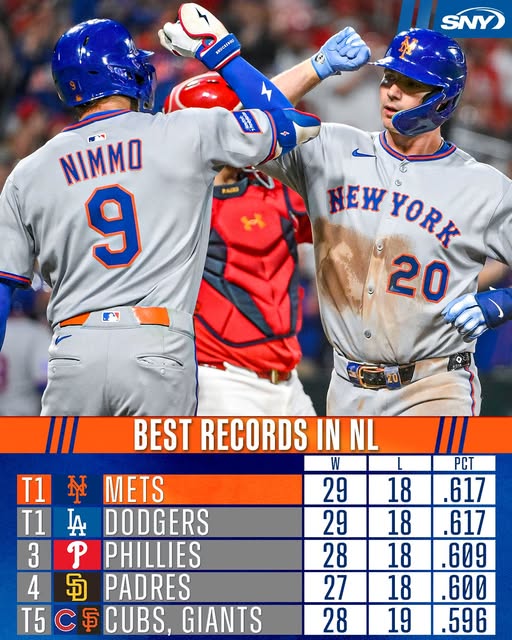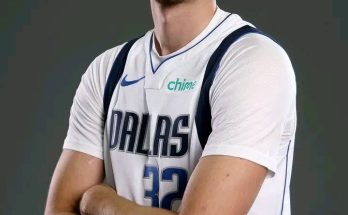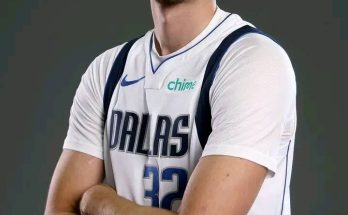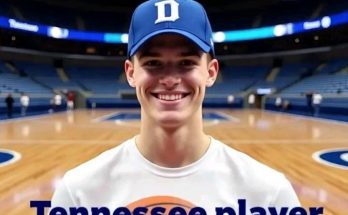As the 2025 Major League Baseball season nears its one-third mark, two of the National League’s biggest powerhouses find themselves deadlocked at the top of the standings: the New York Mets and the Los Angeles Dodgers. Both clubs entered the season with high expectations, bolstered by offseason acquisitions, strong returning cores, and championship-level aspirations. Yet, few could have predicted just how neck-and-neck these teams would be through the early months of the season. Their identical records reflect not just raw talent, but resilience, depth, and a shared hunger to dominate October when the games matter most.
For the New York Mets, this season has been about validation and redemption. After a 2024 campaign that ended in disappointment and questions swirling around the franchise’s long-term direction, the Mets have bounced back with purpose. Under new manager Carlos Mendoza, the Mets have established a balance between analytics and feel, combining an aggressive approach with discipline and strategic savvy. Pete Alonso continues to be the heartbeat of the lineup, swinging a hot bat that has terrorized NL pitching since Opening Day. With Alonso in a contract year, his focus and determination have elevated not only his game but the entire clubhouse. Francisco Lindor, often a lightning rod for criticism during cold stretches, has responded with consistent offensive production and Gold Glove-level defense. The left side of the Mets’ infield is perhaps the strongest in baseball, and it has fueled countless rallies and shutdown innings.
The Mets’ pitching has also come into form after early-season questions about health and depth. Kodai Senga, who missed the first few weeks due to injury, returned to dominant form, showcasing a devastating splitter and pinpoint command. The emergence of Jose Butto and the stability provided by Sean Manaea have been crucial. Manaea, once viewed as a back-end starter, has reinvented himself as a reliable innings-eater who keeps the Mets in games with a bulldog mentality. Meanwhile, Edwin Díaz has returned to his role as one of the most feared closers in the league, flashing triple-digit heat and his signature trumpet-backed confidence. His return to form has stabilized the back end of the bullpen and allowed the Mets to close out tight games — the type they routinely lost in previous seasons.
Offensively, the Mets have found production throughout the lineup. Brandon Nimmo remains a reliable presence at the top of the order, getting on base at a near-.400 clip and setting the tone for the power hitters behind him. Jeff McNeil, now firmly entrenched at second base, has delivered clutch hits and continues to be one of the toughest outs in baseball. Perhaps most encouraging for the Mets is the emergence of young slugger Brett Baty, who has started to fulfill the promise that made him one of the organization’s most prized prospects. With a compact swing and improved plate discipline, Baty has provided left-handed thump and timely hitting.
On the West Coast, the Los Angeles Dodgers have met their high expectations with machine-like precision. Coming off a World Series title in 2024, many wondered whether the Dodgers could maintain their dominance amid changes to the roster and the pressures of defending a championship. But with a front office that continually adapts and a roster loaded with stars, the Dodgers have answered every challenge. Shohei Ohtani, despite being limited to a DH role while recovering from elbow surgery, has been a transformative presence. His bat alone has been enough to keep pitchers awake at night, and his approach to the game — combining joy, professionalism, and relentless competitiveness — has set the tone in the clubhouse.
Mookie Betts remains the heart and soul of the Dodgers, and his seamless transition to shortstop has been one of the stories of the season. A Gold Glove-winning outfielder now playing arguably the most demanding position in the game, Betts has shown why he’s considered one of the best all-around players in the sport. His range, arm, and instincts have given the Dodgers stability at a position that was a question mark heading into 2025. At the plate, Betts continues to produce MVP-level numbers, setting the table with leadoff homers and grinding out at-bats that wear down opposing pitchers.
The Dodgers’ depth has once again proven to be a key factor in their success. Even with a rash of injuries to their pitching staff — including extended IL stints for Walker Buehler, Bobby Miller, and Dustin May — the Dodgers have remained elite thanks to their ability to mix and match, call up young arms, and trust their system. Gavin Stone and Emmet Sheehan have stepped into larger roles, and while not perfect, they’ve kept the Dodgers afloat during a time when many teams would falter. Tyler Glasnow, acquired in the offseason, has been every bit the ace they hoped for. With his towering frame, high-octane fastball, and sharp breaking stuff, Glasnow has dominated NL lineups and brought a stabilizing presence atop the rotation.
The bullpen, too, has been resilient. Evan Phillips has continued to shut down hitters in high-leverage situations, and the Dodgers have unearthed more gems in their bullpen like Ryan Brasier and Joe Kelly, whose veteran presence has helped mentor younger relievers. The Dodgers’ ability to manage innings, optimize matchups, and deploy relievers based on game situations reflects the brilliance of manager Dave Roberts and his staff.
At the plate, the Dodgers’ offensive juggernaut goes well beyond Ohtani and Betts. Freddie Freeman continues to rake, maintaining his status as one of the most consistent hitters in the league. His leadership and professionalism make him invaluable in the clubhouse. Max Muncy has rediscovered his power stroke, JD Martinez has provided crucial right-handed pop, and James Outman’s development has given the Dodgers another dynamic weapon. Even with injuries and slumps, the Dodgers find ways to produce. Their offensive depth — capable of scoring runs in bunches or manufacturing them with small ball — makes them uniquely dangerous.
Despite their similarities in record and talent, the Mets and Dodgers are built somewhat differently. The Mets, more top-heavy and reliant on a smaller group of stars, depend on strong performances from a few core players. The Dodgers, by contrast, operate with a depth-driven model, using the full 40-man roster and embracing positional versatility. Yet, both approaches have proven effective, and their identical records reflect how different philosophies can lead to the same result when executed properly.
There’s also a sense of unfinished business driving both teams. The Mets haven’t won a World Series since 1986 and have endured numerous painful playoff exits in recent decades. For fans, this season represents a return to relevance, and the way the team is performing has brought life back to Citi Field. The crowd has been electric, feeding off the team’s energy and creating an atmosphere reminiscent of the 2015 playoff run. There’s a belief — growing louder with each win — that this could be the year the Mets finally break through.
For the Dodgers, the motivation is different. Yes, they won it all in 2024, but they remain hungry for more, fueled by the pressure that comes with being the gold standard of the NL. No team in recent memory has carried such consistent expectations, and the Dodgers continue to meet them. Their fan base, while spoiled by regular-season success, demands postseason results. Anything short of another World Series appearance would be viewed as a failure, and that pressure is both a motivator and a burden. Yet, the team seems equipped to handle it — a testament to their culture, leadership, and experience.
With nearly two-thirds of the season remaining, plenty can change. Injuries, slumps, unexpected trades, and rising competitors will shape the race for the National League crown. The Braves, Phillies, Brewers, and Padres remain in the mix, and the playoff picture is far from settled. But through nearly 60 games, it’s the Mets and Dodgers who have established themselves as the class of the league. A potential showdown in October feels not just possible, but likely — and that would be a dream matchup for MLB.
Imagine a postseason series between these two franchises: the East Coast Mets with their big-market swagger, emerging stars, and long-suffering fan base versus the West Coast Dodgers, perennial contenders, international icons, and organizational excellence. It would be a battle of philosophies, personalities, and legacies. A seven-game war between Alonso and Freeman, between Lindor and Betts, between Díaz and Phillips. The baseball world would watch in awe.
Until then, the regular season grind continues. Both teams face difficult stretches ahead. The Mets will soon enter a gauntlet of games against the Braves and Phillies, while the Dodgers have a brutal June schedule with multiple East Coast road trips and interleague matchups against AL contenders. How they navigate those tests will say a lot about their staying power.
Yet, if the early results are any indication, both teams are built for the long haul. They win in different ways but share the same goal. And as the calendar inches closer to summer, the Mets and Dodgers are giving fans a tantalizing preview of what might come in October. Whether you’re watching from Queens or Chavez Ravine, this is shaping up to be a season to remember — and perhaps a preview of an epic postseason clash between two of the sport’s most compelling franchises.



